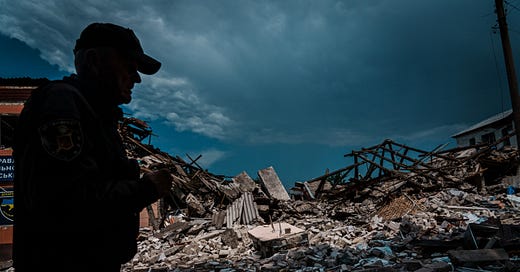
Public accounts make it clear that Russia intends to win the war for the control of eastern Ukraine the old-school way: superior, massed artillery fire using hundreds of thousands of unguided projectiles.
Ukrainian armed forces have limited numbers of heavier weapons, around 100 of the American 155 millimeter howitzers, and radars that can track enemy artillery rounds in flight in order to locate enemy guns. This counter-battery fire can be made more effective through the use of precision-guided artillery rounds and, over time, should reduce the effectiveness of the enemy artillery. But so far, it has not.
It’s not clear why Ukrainian counter-battery fire has not been successful in neutralizing Russian artillery fire. There may be too many Russian guns. Russians may be successfully using “shoot and scoot” tactics. Ukrainian forces may not yet have mastered the difficult task of locating and shooting accurately at enemy artillery. But whatever the reason, the bottom line is that Ukrainian howitzers cannot now match the mass artillery fire of the Russians. Which means that Ukrainian casualties have increased to a point that may not be sustainable.
So what can be done?
Massed artillery that uses hundreds of tons of artillery shells every day creates a target for modern precision guided weapons. Large shipments of artillery shells can only be moved from Russia to Ukraine by railroad. Civilian maps show about a dozen rail crossings from Russia into Ukraine.
Railroads have been military targets as long as there have been railroads, and have been a major target of airpower since World War II. The Soviet Union therefore over-built its railroads—particularly its rail bridges—to withstand air attack. As did its Vietnamese allies. American airmen of a certain age remember the difficulty of taking out the Paul Doumer and Thanh Hoa bridges around Hanoi.
Precision guided weapons make that task easier, but they still need to have big, powerful warheads. Multiple attacks will be needed. The trouble is, the United States weapons of this kind are fired from manned combat aircraft, rather than fired by surface launched missiles—because the United States Air Forces has historically owned this mission.
This means that the United States does not today own surface-to-surface precision guided missiles with big warheads. So the Russian rail lines cannot be cut off by giving American surface-to-surface missiles to Ukraine. The United States will not send its Air Force into combat in Ukraine. The Ukrainian Air Force has limited capabilities while the rail crossings from Russia have air defenses—so giving Ukraine American air launched weapons will not work, either.
But other countries do make the necessary surface-to-surface weapons. The new Spear cruise missile, manufactured by Singapore and Israel, has the needed anti-ship and anti-land capabilities, and was sold this year to Estonia.
Because the Spear can reach the Russian-Ukrainian border, it could also reach Russia. It will be argued that giving Spears to Ukraine might risk a Russian counter-escalation.
But Ukrainian fighter aircraft and helicopters can already hit Russia and escalation has been avoided by Ukraine showing restraint in the use of these weapons. The same could be true of the Spear missile.
There are other considerations. The Spear could not be operated this summer by Ukrainians. The Ukrainians have been fast learners, but this is a complex, unfamiliar system. It would have to be operated by non-Ukrainians.
Which means that the choices come down to this:
The United States must urgently improve the counter-battery capabilities of the howitzers already in Ukrainian hands.
If precision guided artillery shells have not been provided already, they should be airlifted immediately.
Training should be intensified.
American friends who have been reluctant to arm the Ukrainians should be engaged by senior Biden administration officials. They should be made aware of the stakes of the outcome of the war in Ukraine and vigorously encouraged to provide the necessary assistance.
Or we can watch the Ukrainians be bled into accepting a Russian settlement offer.



